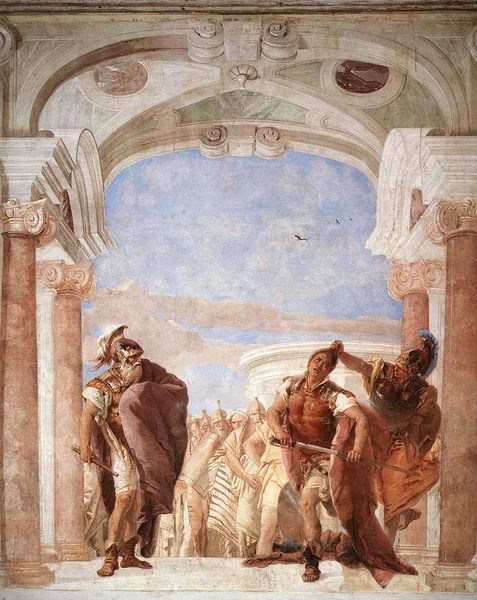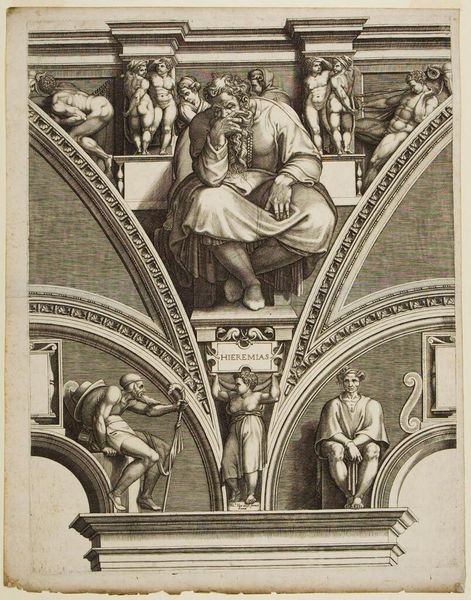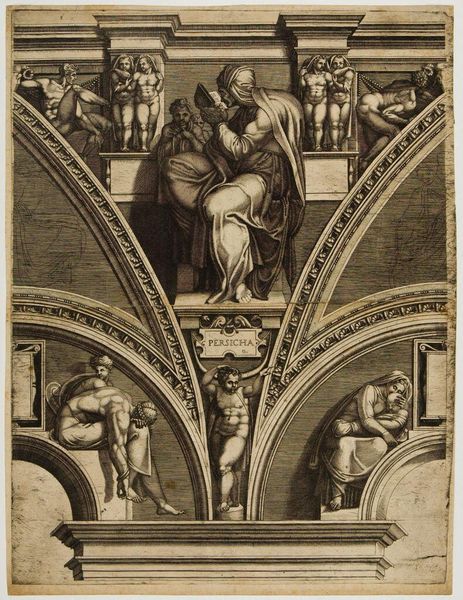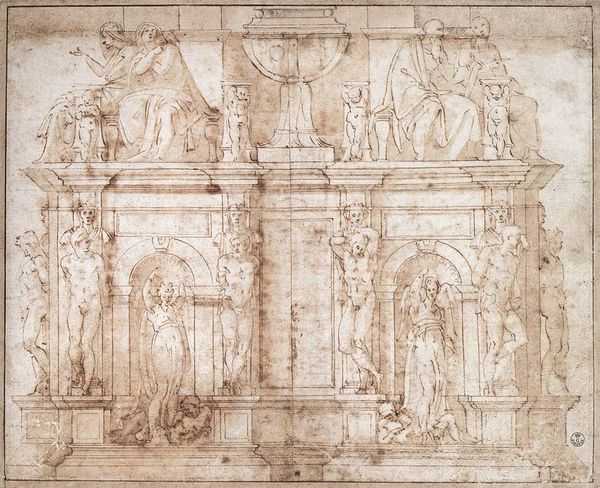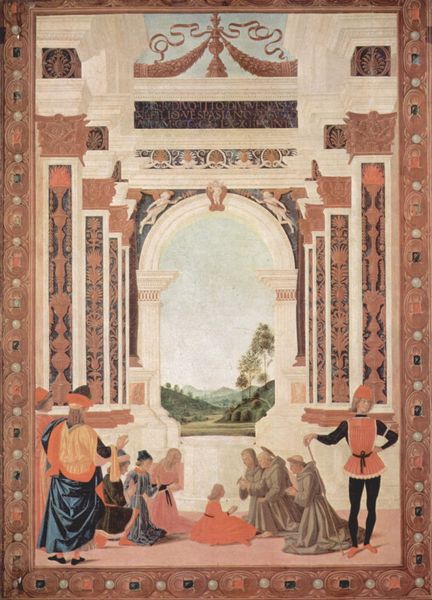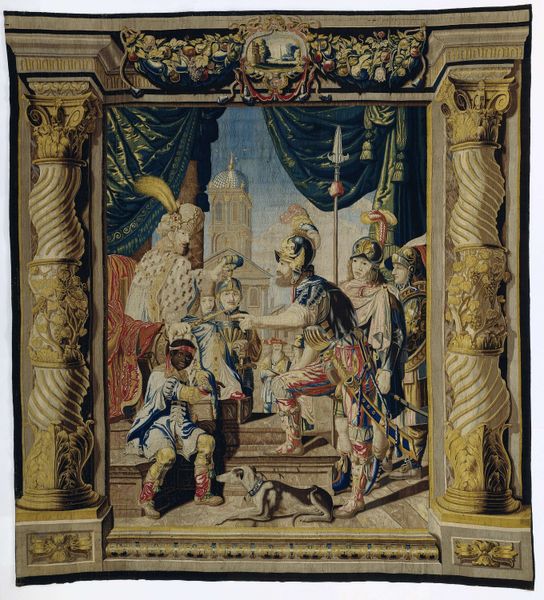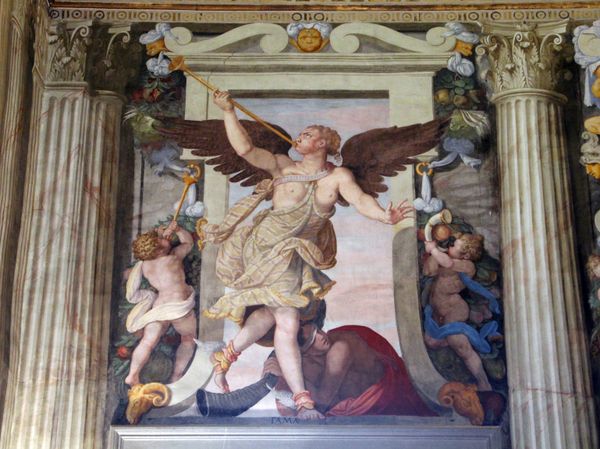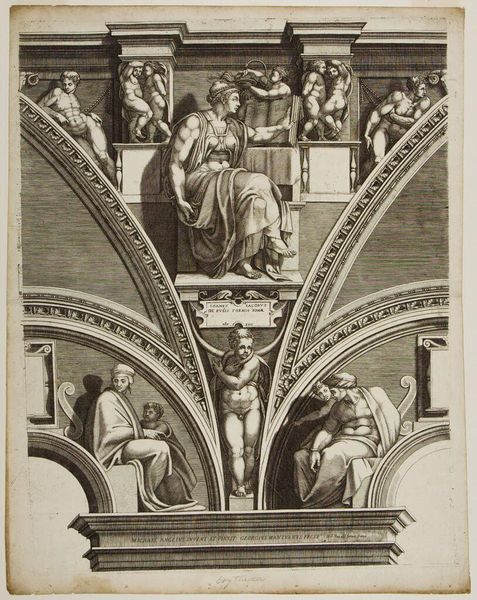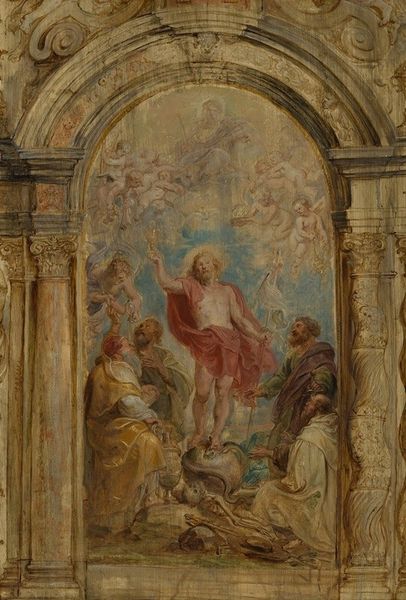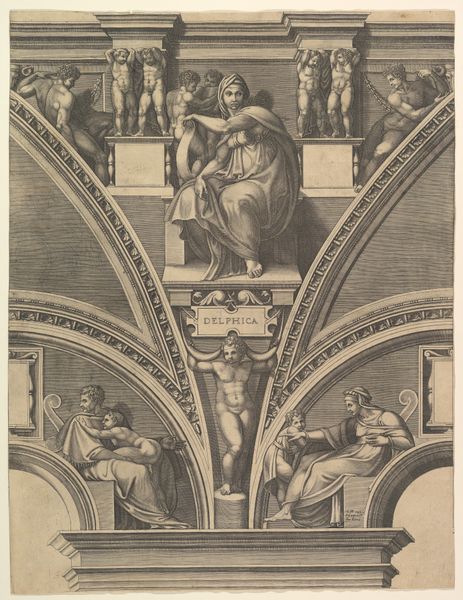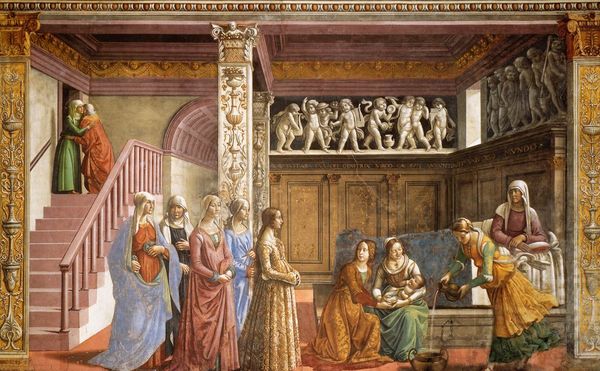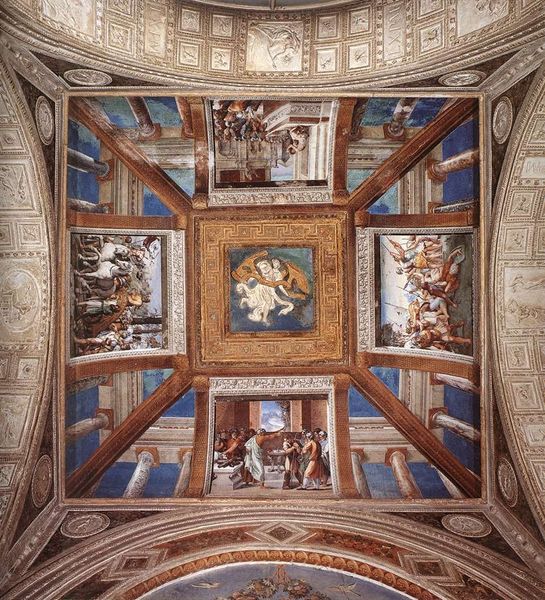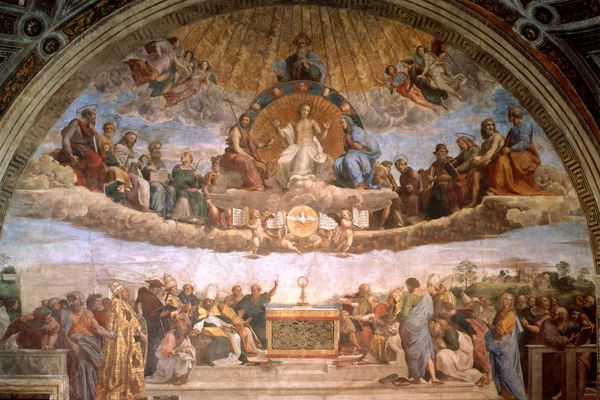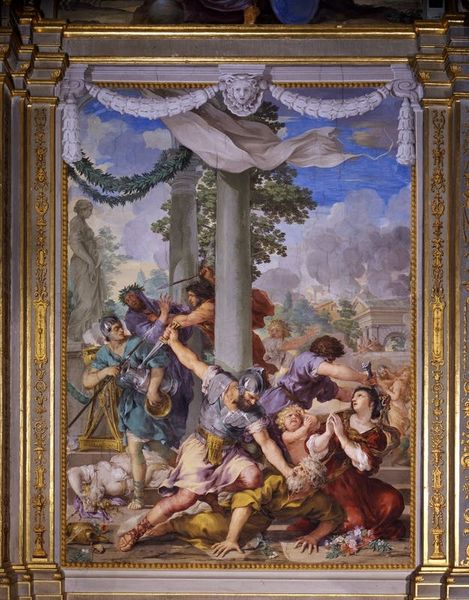
Scenes from the Life of Furius Camillus 1545
0:00
0:00
architecture
#
building site documentary shot
#
sculpture
#
holy-places
#
historic architecture
#
traditional architecture
#
derelict
#
unrealistic statue
#
veil as a decoration
#
arch
#
watercolor
#
architecture
#
historical building
#
statue
Copyright: Public domain
Curator: Standing here in the Palazzo Vecchio, we're face-to-face with Francesco Salviati’s 1545 fresco cycle, particularly the panel "Scenes from the Life of Furius Camillus." Editor: It strikes me immediately with its dynamism. All those figures, all that movement, almost overwhelming, but captivating too! I'm curious about how much actual labour went into making something so elaborate right onto the wall of this room. Curator: It is indeed complex. Salviati employs a highly Mannerist style. Notice how he distorts proportion and anatomy to create a sense of dramatic intensity. The poses are affected, the gestures exaggerated, all carefully orchestrated for symbolic communication. Think about what each body signifies. Editor: Precisely! How were the pigments sourced? Who ground them? These large-scale works involve workshops; understanding the relationships between master and apprentice sheds light on the material's journey to final form. Was the intonaco mixed on-site, or were materials outsourced from specialized vendors? Curator: Intriguing questions. Salviati was known for his erudition. The figures are derived from classical sculpture, his compositions, deeply studied references to Roman triumphs and processions. The arch, the sculptural details—everything evokes Roman grandeur. Editor: The political climate would be fascinating to explore. I’d like to think about how Salviati’s workshop negotiated the cost of materials given the available budget. How would the supply chains in 16th century Florence affect the quality, availability, and even meaning embedded within these frescoes? Curator: We can decode the iconographic program: Camillus, the Roman hero, symbolizes Florentine virtues: civic duty, military prowess, patriotism. This glorification of the past legitimized the Medici rule. Editor: And how was the cost of that "legitimization" distributed? Beyond materials, we must account for the hours, the living conditions of those doing the mixing, applying, and building, which leaves the questions about who really profits here, with those stories encoded within the surface itself. Curator: True, but also appreciate the artistry, how Salviati balances chaos and order, how he guides the eye with diagonal lines and contrasting colors. Look at the strategic placement of light and shadow to accentuate certain figures and actions. Editor: It's a perspective I find hard to disagree with. It shows how we can never be too thorough in assessing artworks. It is more than what we initially thought it was when just merely observing it.
Comments
No comments
Be the first to comment and join the conversation on the ultimate creative platform.
